If you haven’t heard of, or put Tbilisi on your bucket list, I wouldn’t be surprised. Tbilisi, the capital of Georgia, a former USSR republic, is to use a cliche, an underrated destination. And true to form like many underrated destinations around the world, it gives you much more than you may have imagined or expected.
Some of you might have come across news about protests in Tbilisi against the Foreign Agents Bill, and might wonder if it’s safe to go? We were there just a day before one of the major protests, and we also witnessed a more modest one. We didn’t have any issues; I did have conversations with the receptionist, the local guide and a few other people about what they thought of the Bill, and people spoke freely. Their aspirations lay with Europe, they said, not with Russia and not certainly for a democracy that was authoritarian in nature. While we never felt unsafe whilst we were there, it would always be worthwhile to take all considerations in mind before you plan your trip.
To begin with, when did we go and is May a good time to visit Tbilisi?
We went in the first week of May, and were in time for the Orthodox Easter Sunday. (The Orthodox Church follows a different day for Easter celebrations from that of the Roman Catholic one or the Protestant Church. For example, Easter in UK and Ireland was celebrated in March this year, whereas in Georgia, it was on May 5).
Which meant that we could take in some unique Easter traditions. Like the liturgy service with the polyphonic singing. I particularly loved the bit about the dyed-Easter eggs. There’s a lovely story behind it and I cannot resist telling you a bit about it.
So the tradition of the red Easter eggs traces itself to the time of Christ. When Christ was resurrected, Mary Magdalene congratulated the Roman Emperor Tiberius and gave him an egg from the basket (of eggs) she was carrying. He said to her something on the lines of “That Christ is resurrected is as true as the eggs in your basket turning red before my eyes!” And as soon as he said that, the eggs turned red. That is where the tradition of dyeing them red for Easter comes from, and on Easter and the days following it, our hotel duly laid out these eggs at the breakfast buffet.
I also saw offerings of Paska (special Easter cake/bread) and several dyed eggs laid on a dish with green sprouts of wheat grass in churches. (You would also see local bakeries with alluring rows of paskas. This bread is as packed with meaning as it is with raisins. It is believed that paska stands for the sweet nature of Jesus Christ and his resurrection.) I was able to attend some parts of the special Easter service, and simply loved the atmosphere, the singing, the fragrance of incense/myrrh …
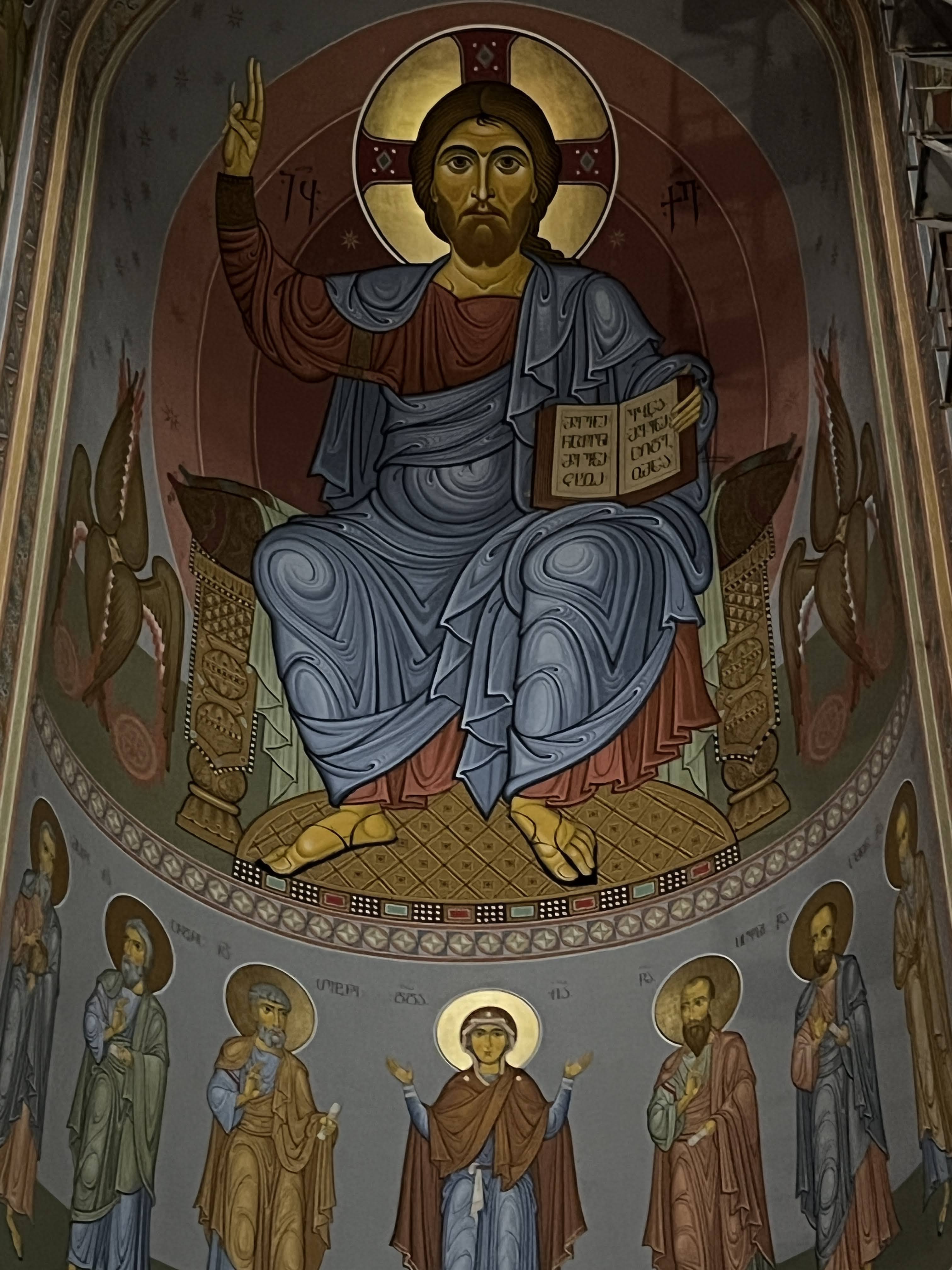
What else did we do, and what can you do too?
I must admit, we did several things. Bless our sneakers. We took the Funicular, the Russian era Underground Metro, the cable car, spent time in the many churches and monasteries, a museum, parks, the Botanical Gardens, a day trip to the Kazbegi region, an excursion to take in the Monument of Tbilisi and the artificial sea, even squeezed in a bit of a zip-lining, a local walking tour and a food plaza!
However, one of my favourite things to do was to wander. Taking in the buildings, sculpture, courtyards, and bakeries. We explored Tbilisi by the day and also when night fell. For architecture lovers, Tbilisi is a paradise. Intricately carved balconies and verandas, some of retaining the powder blue colour scheme, communal courtyards with fountains, laundry lines, cats and blooming vines, spiral staircases, and fresco lined hallways. You will find art nouveau mansions with sad stories looming over them like a ghostly entity. A good guide will let you in on these stories, and once they do, these stories will travel back with you, like a lingering dab of perfume that someone left on your coat.
Some of our favourite haunts were areas around Liberty Square, Rustaveli Avenue as also the Lado Gudiashvili Square.
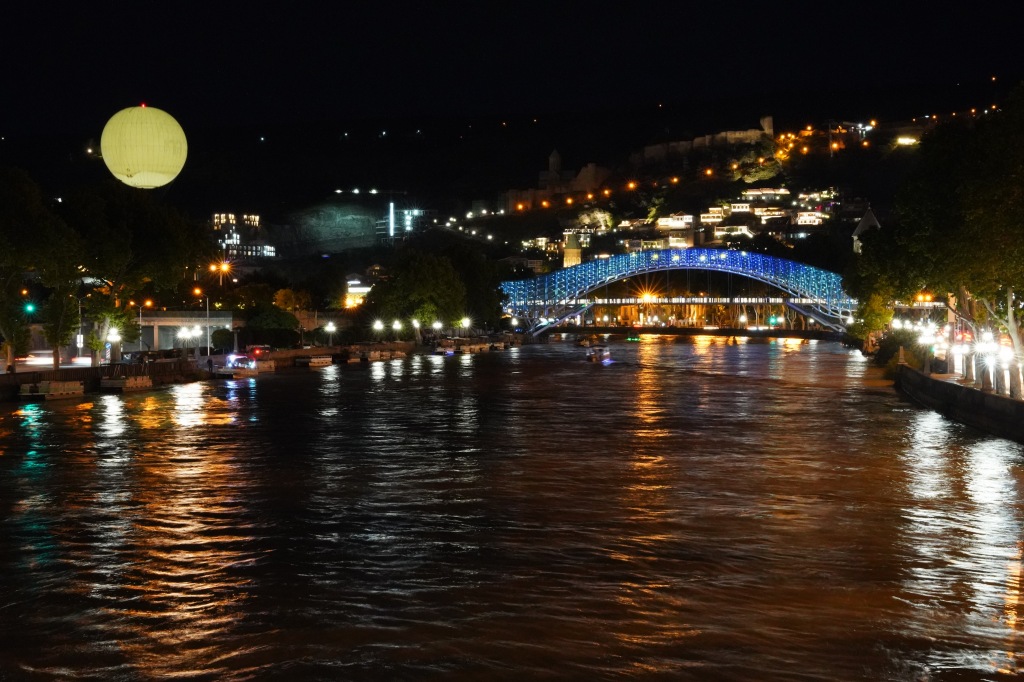
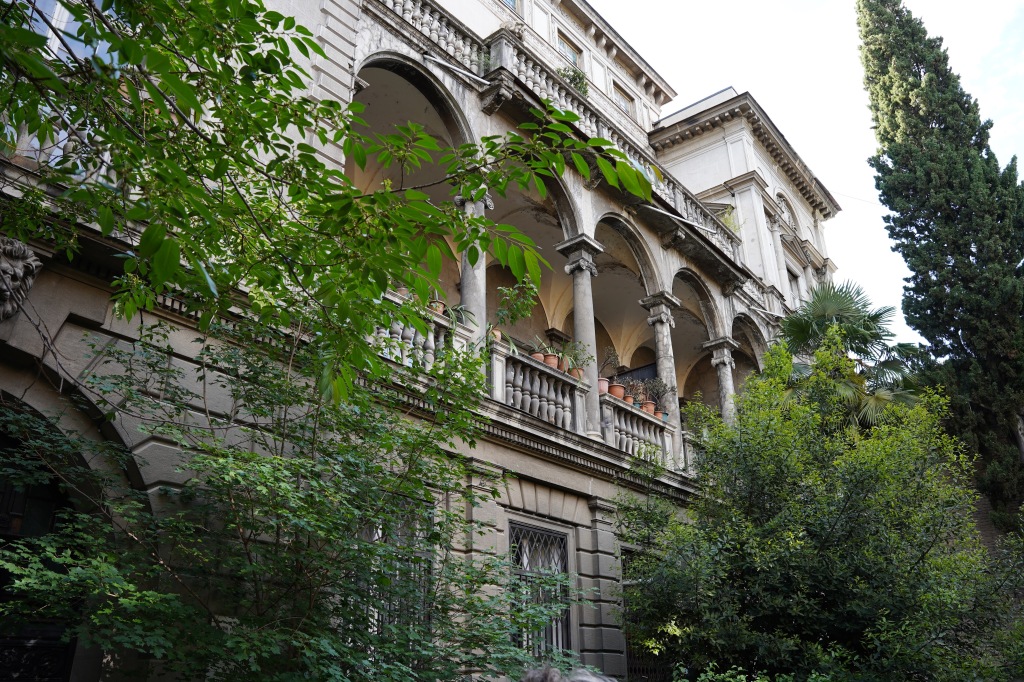
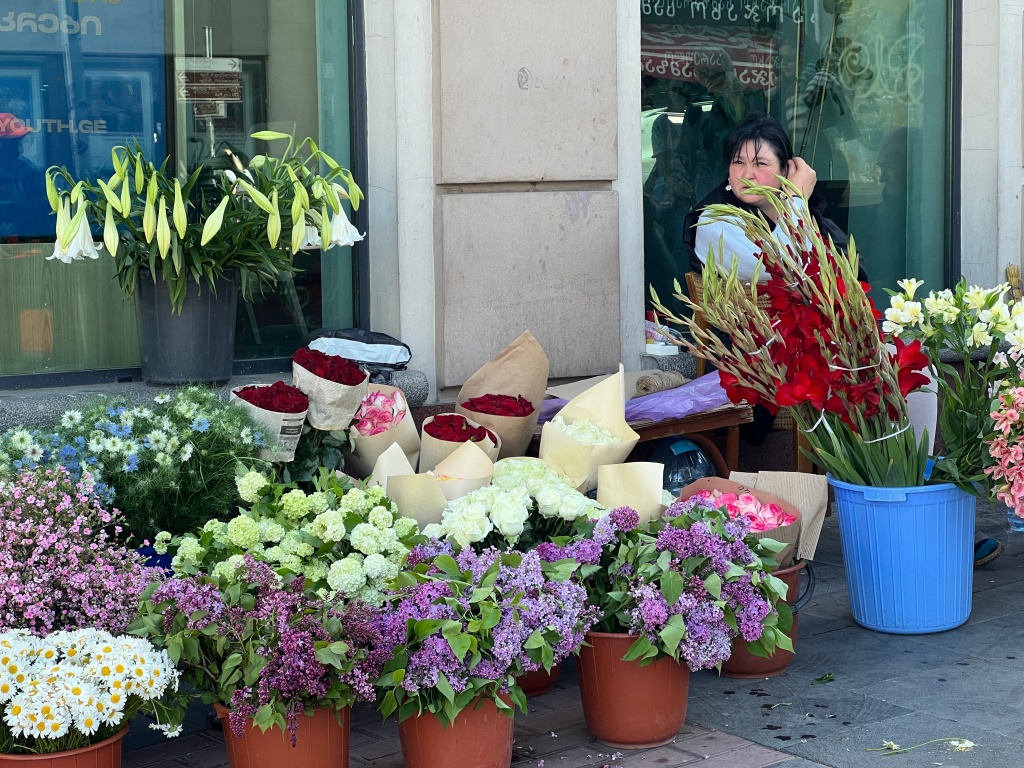
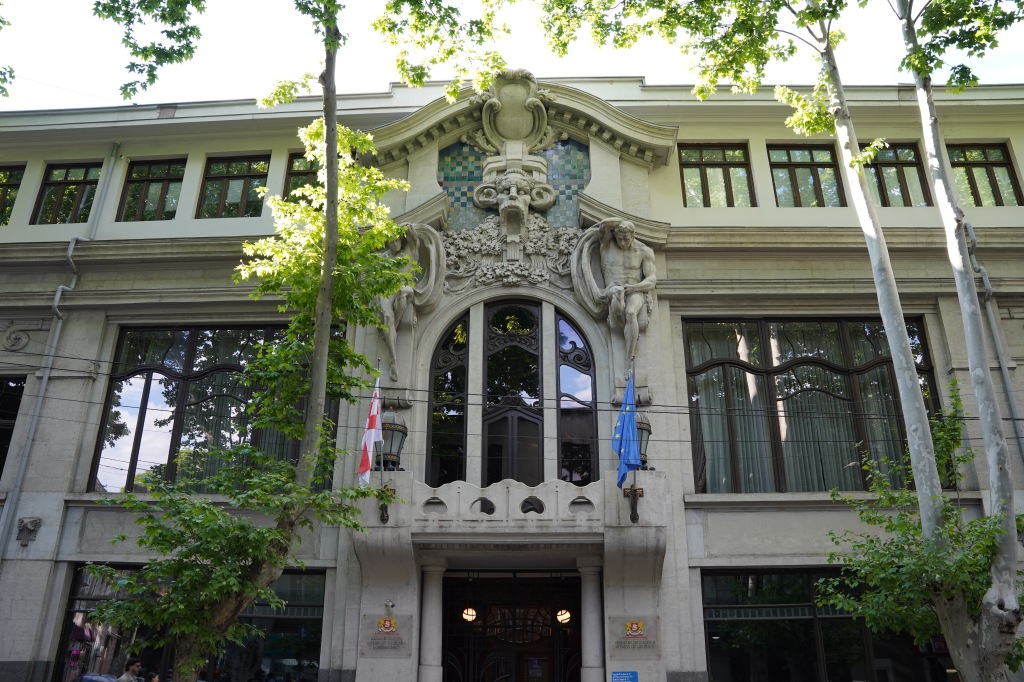
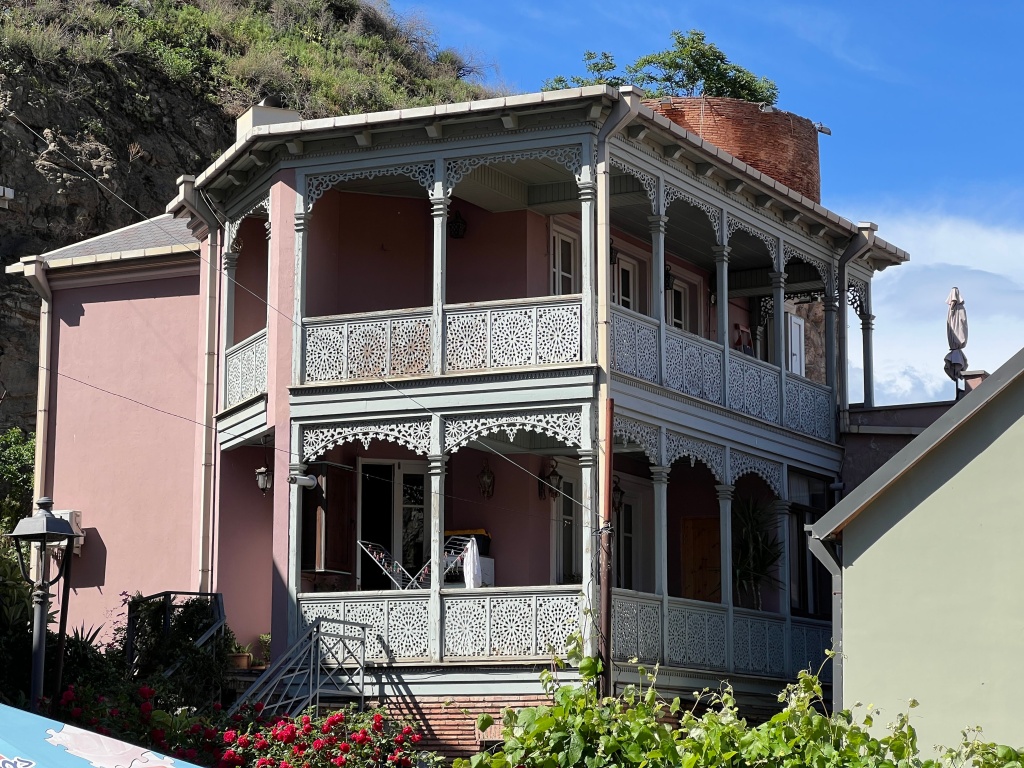
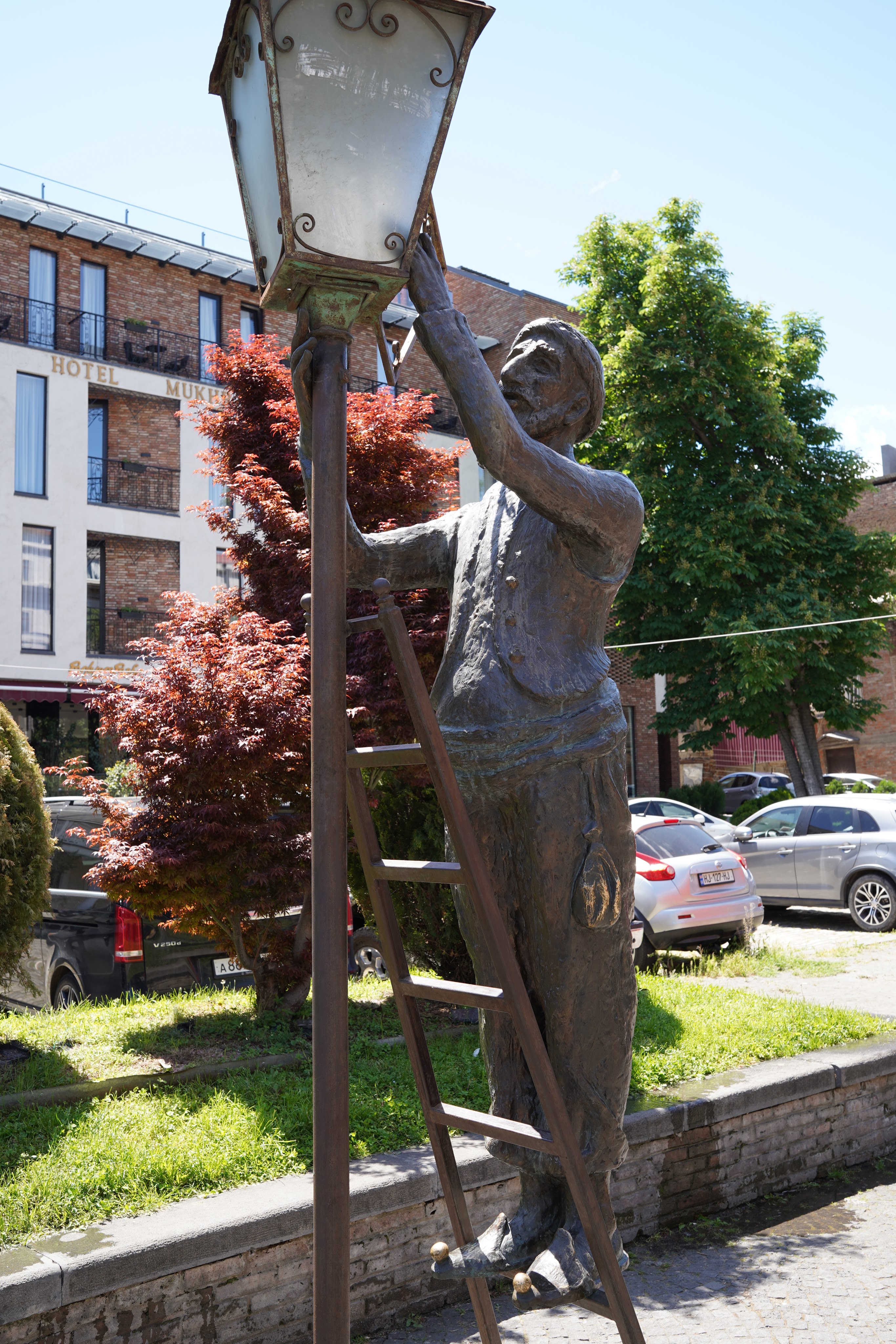
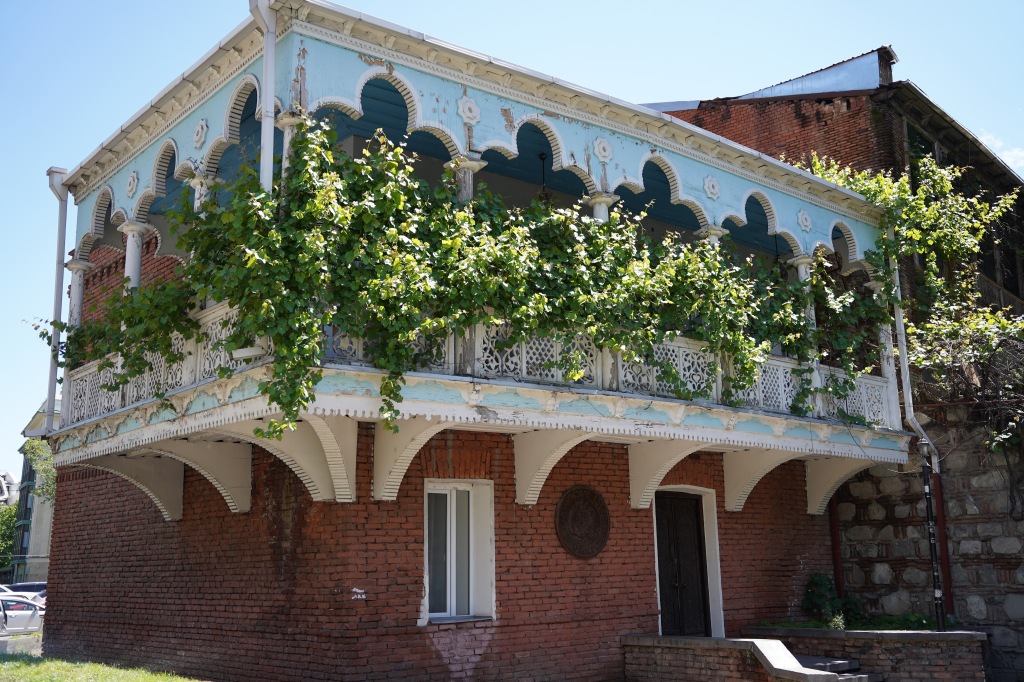
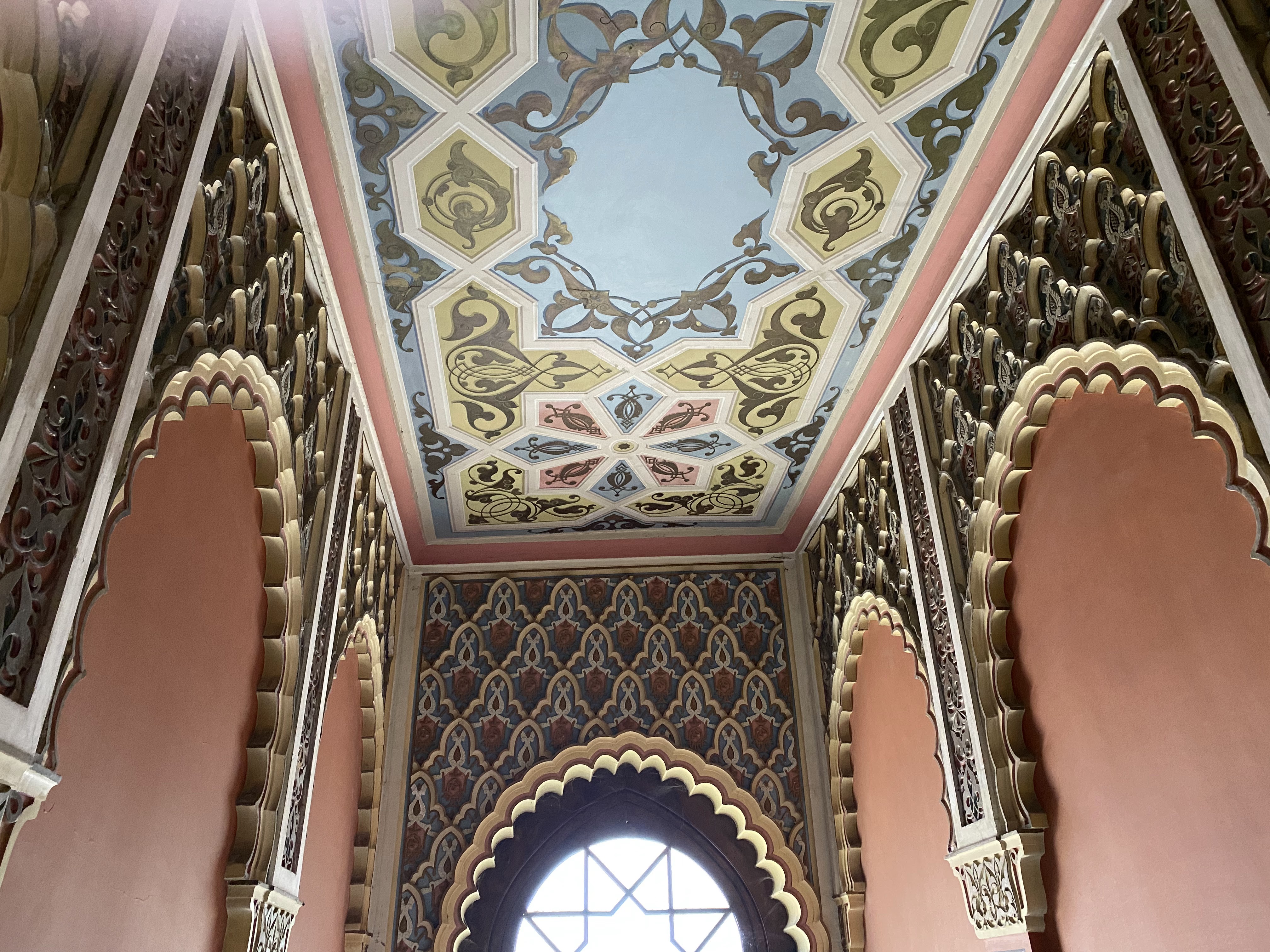
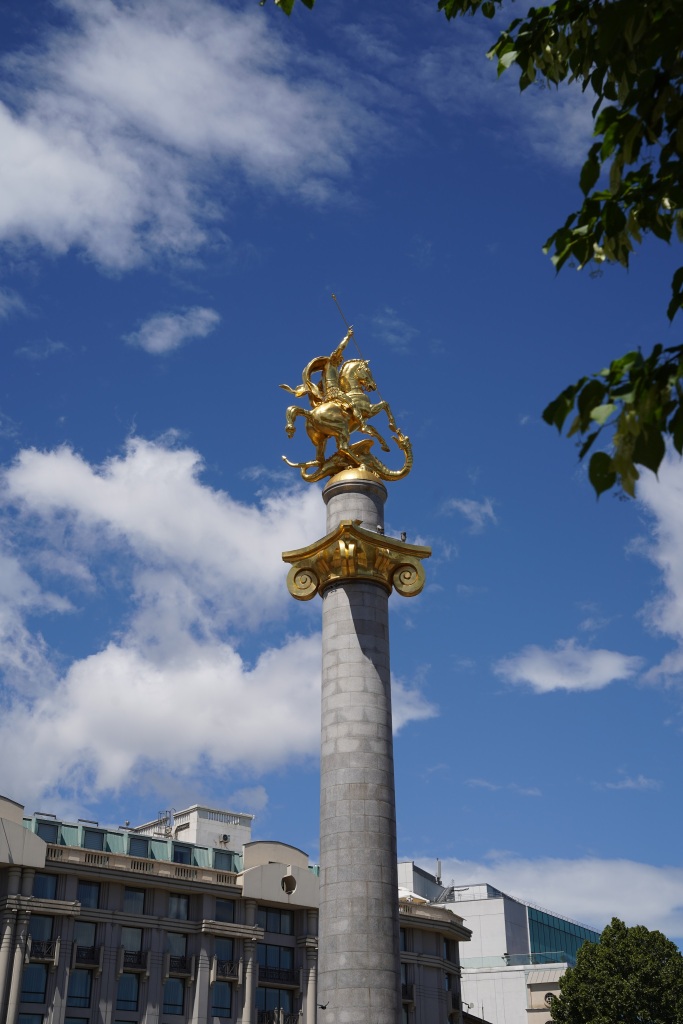
Eat, and drink – everything is so easy on the wallet!
From food to transport, Tbilisi is very affordable – especially so if you compare it to your other travels in Europe. I will do a detailed blog on the food we had, (from piping hot breads, the Lobia Khachapuri, Georgian eggs, Khinkali and more) but it’s quite reasonable to say that your money will go far when ordering food and drinks in Georgia.
If you like the fragrance of warm bread that’s being freshly baked, do visit the local bakeries. They are found in abundance, very modest and nondescript looking. Several steps down into what seems like a cellar, you would have the baker handing out different kind of breads and baked delights. The locals know the time and baking cycles (if you are at the bakery when they have just put the bread into their oven, you would have to wait for 30 minutes or so) and you will see them queuing up. (Some of the freshly baked breads cost just two Georgian Lari!)
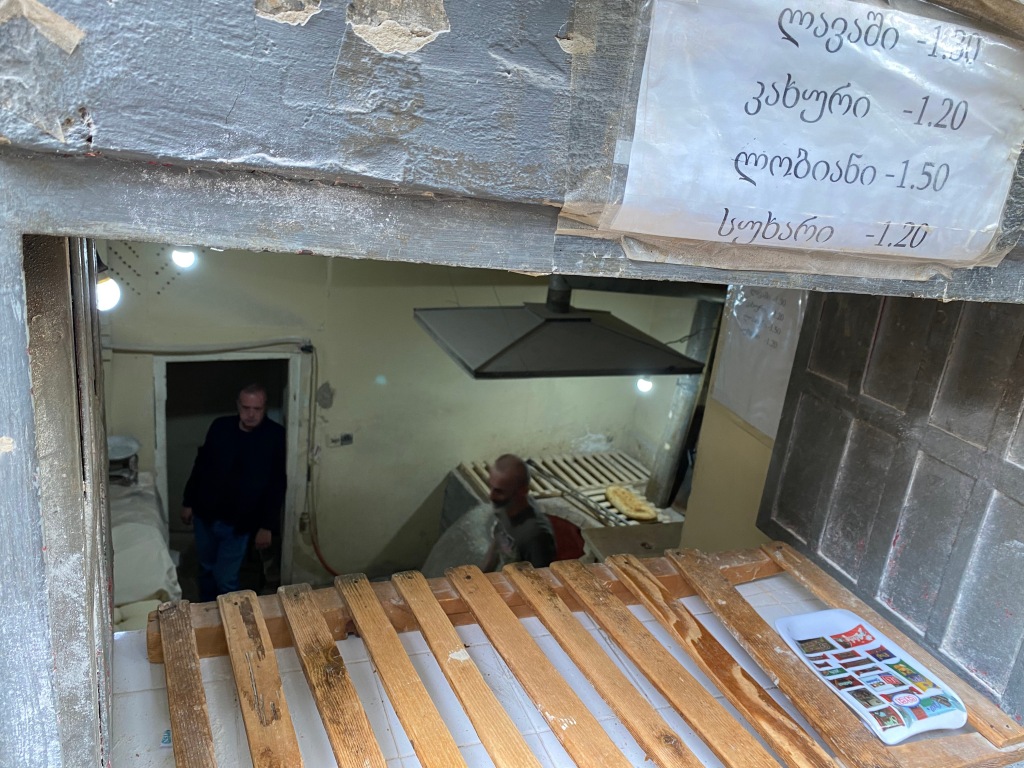
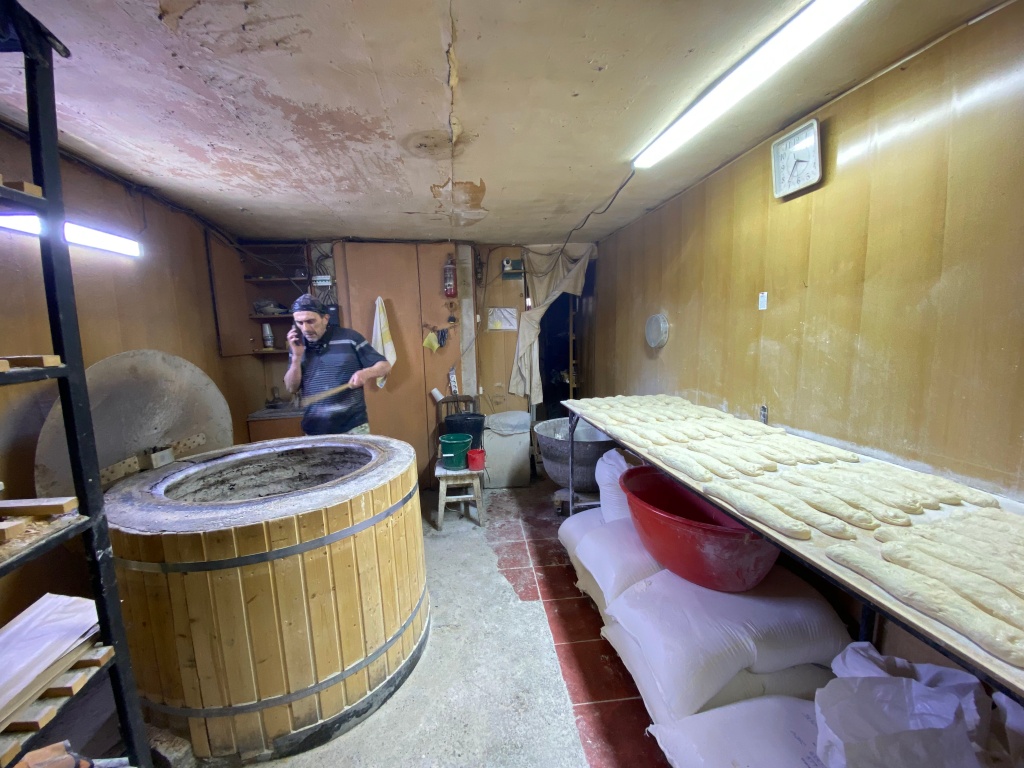
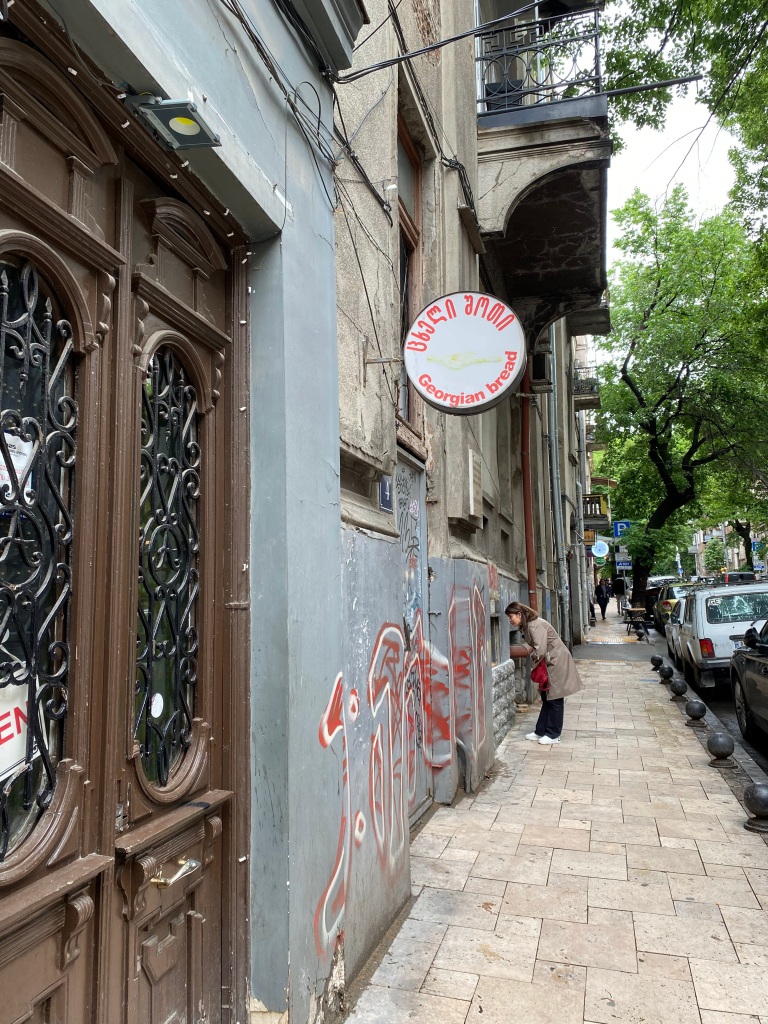
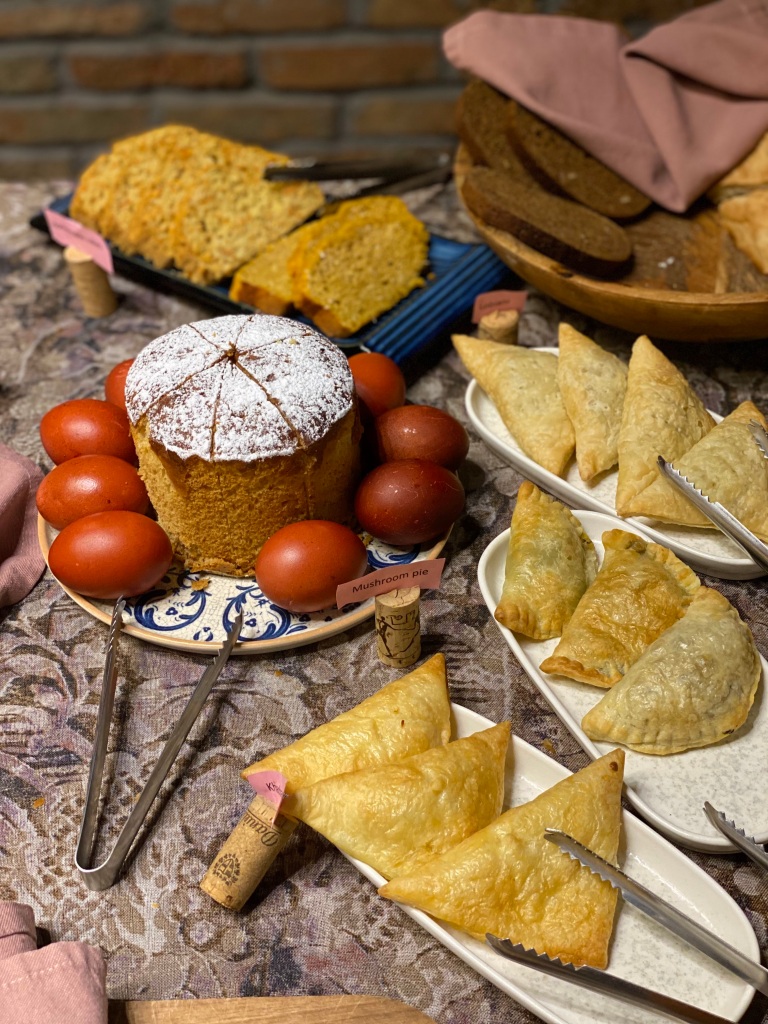
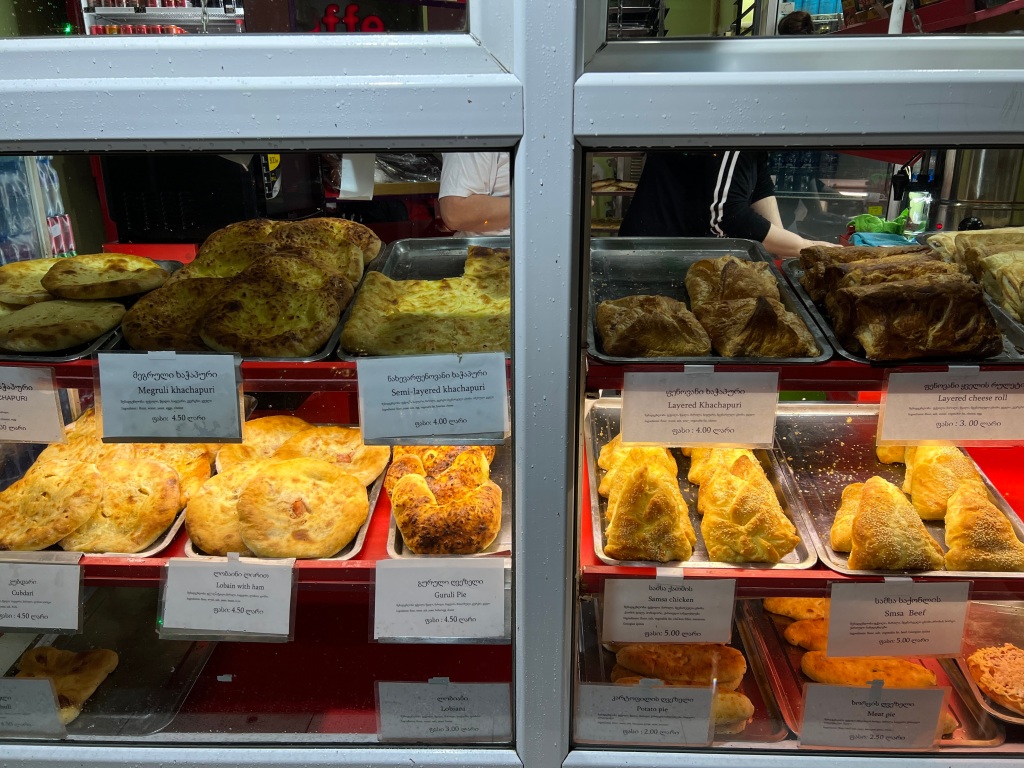
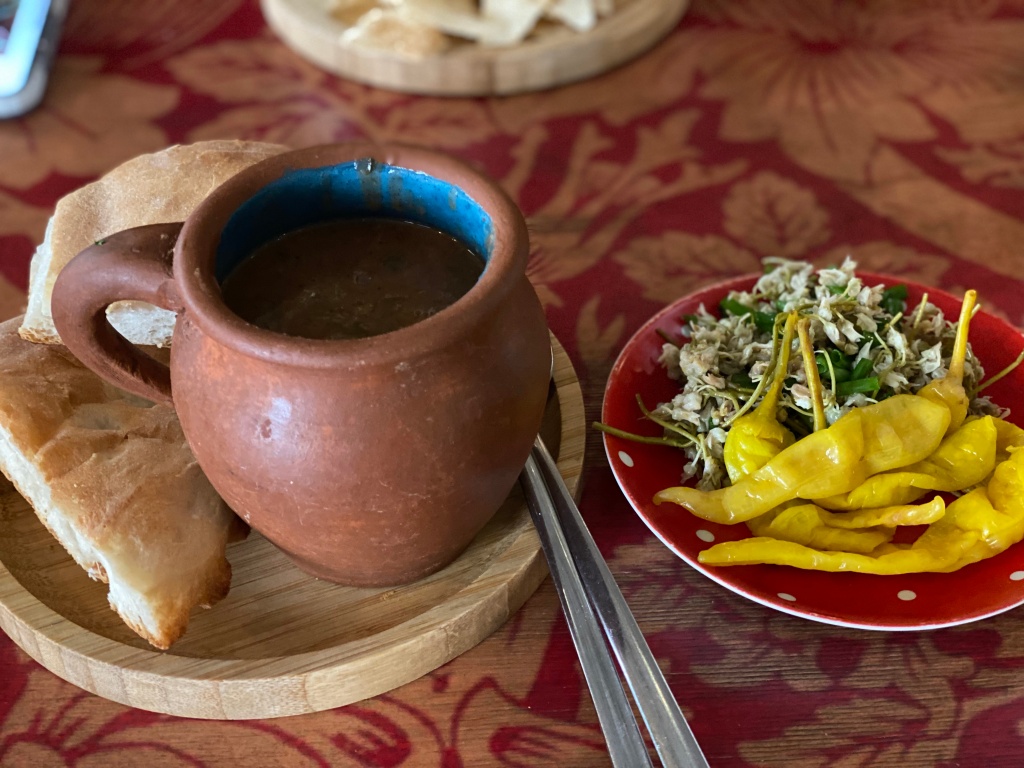
Street art, sculptures and a nod to the inner child in you
Tbilisi has lots of street art, not to mention its many sculptures. You can do a walking tour just to take these in. There’s also a very famous landmark – the puppet tower. Crowds gather every hour when an angel comes out with a small hammer to ring the bell. We hung around too! There’s a child in all of us, isn’t it? The artist-architect Rezo decorated the tower with hundreds of tiles which he designed himself and it’s quite a tower, with a quirky personality of its own.
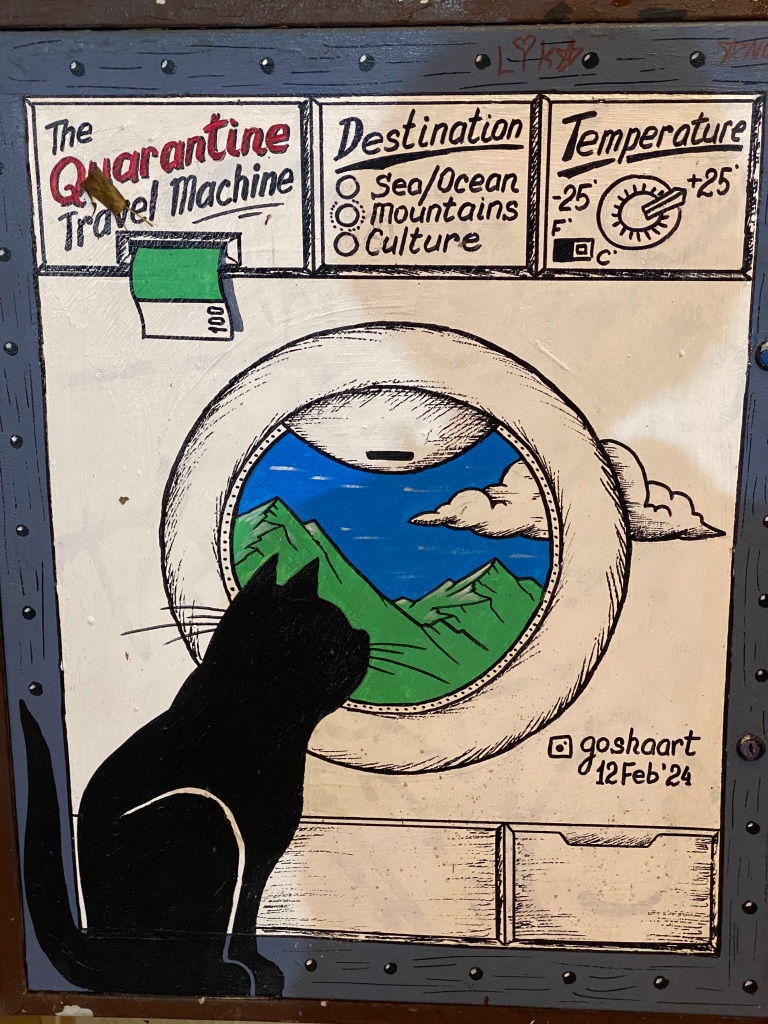
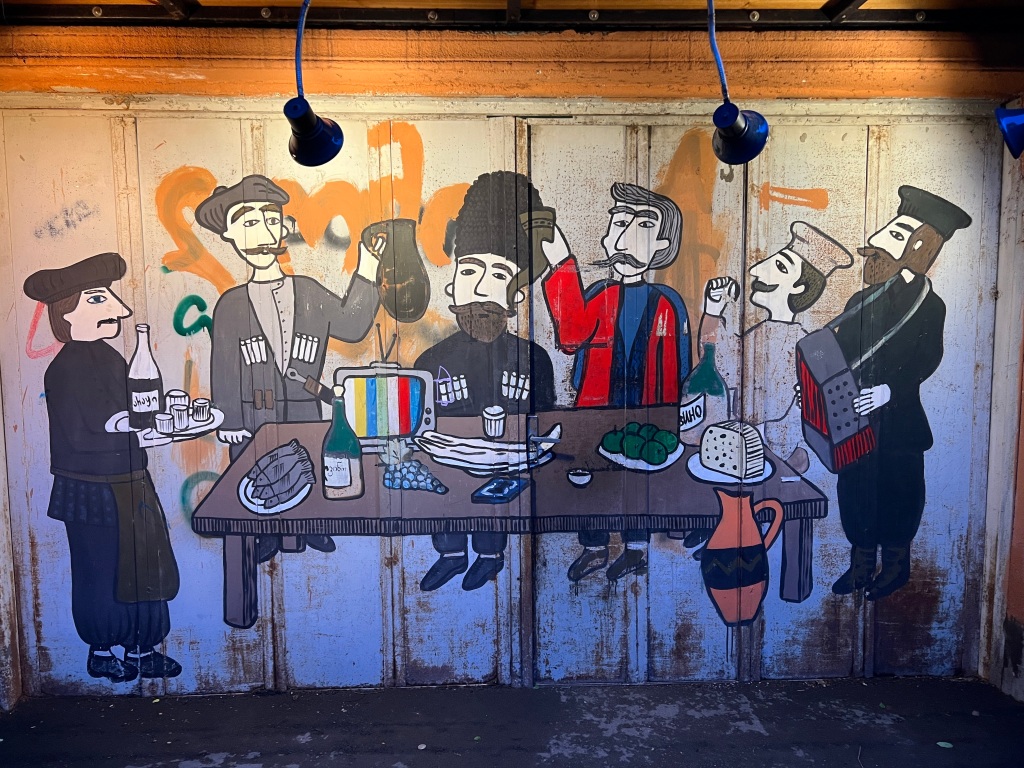
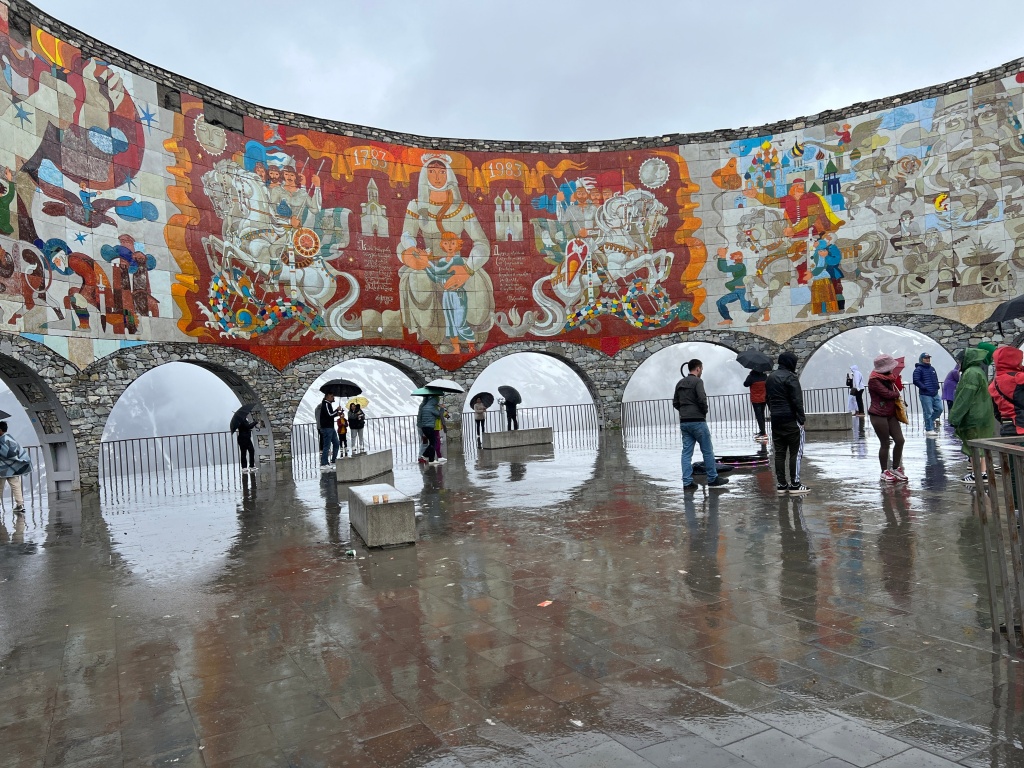
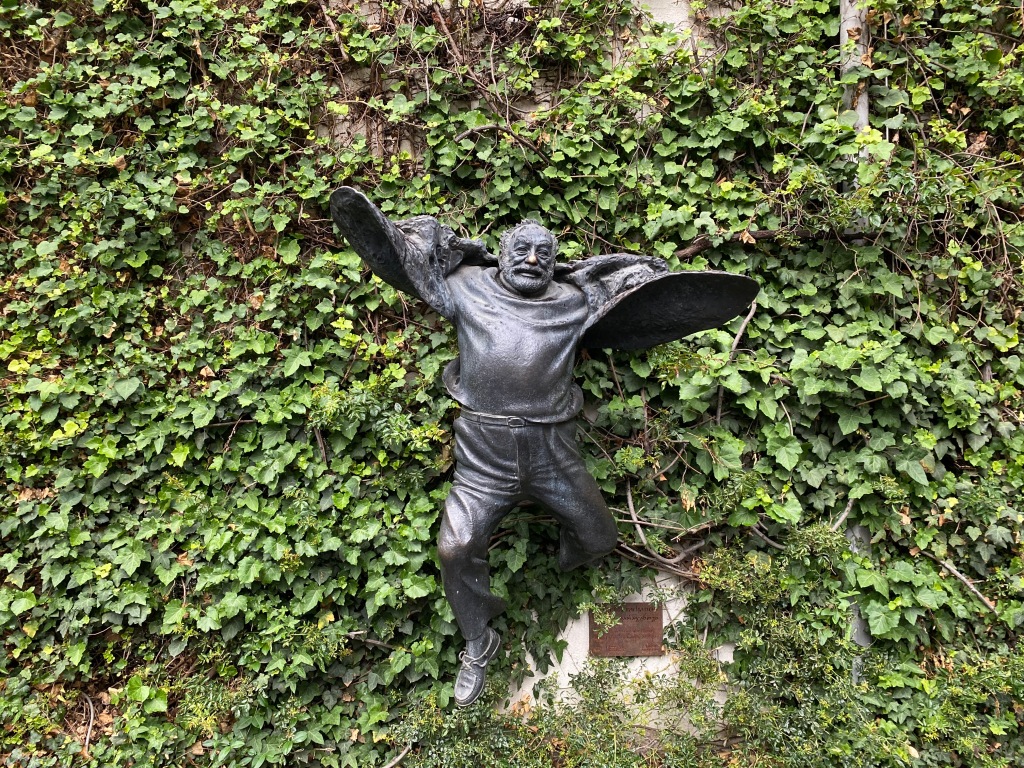
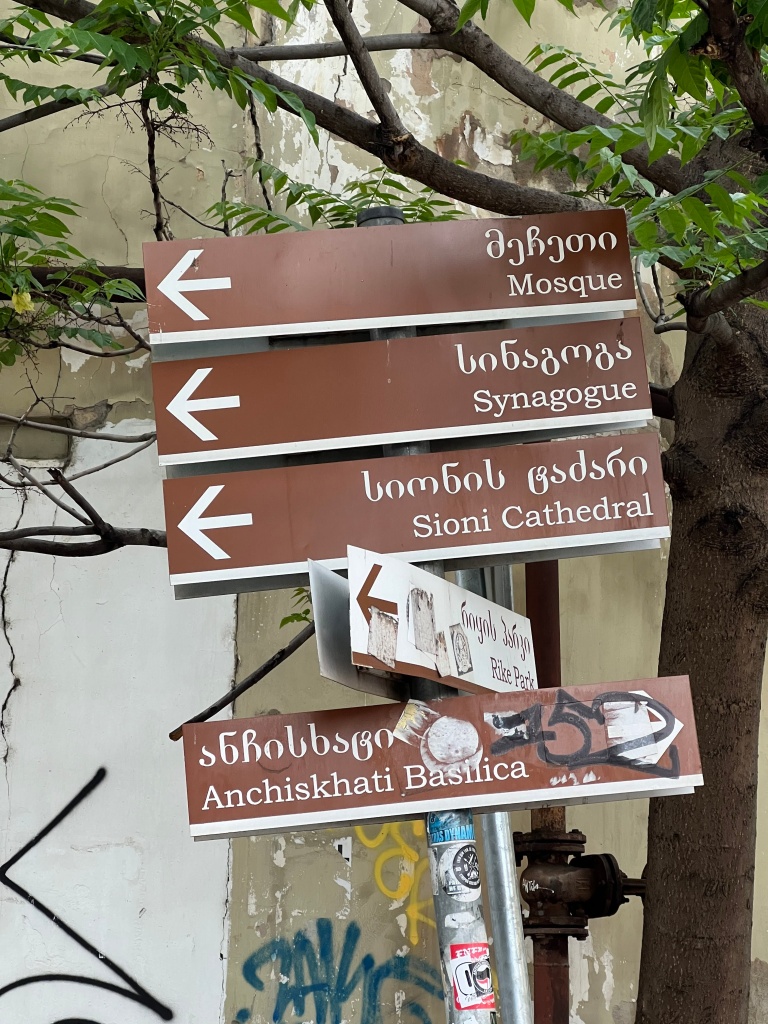
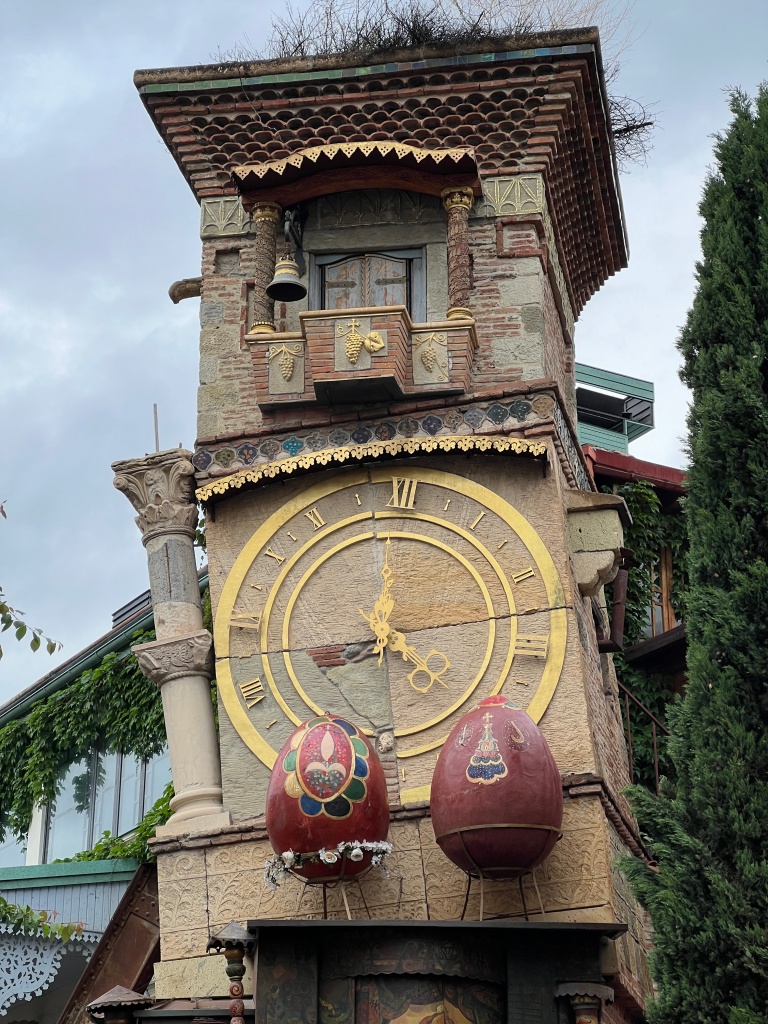
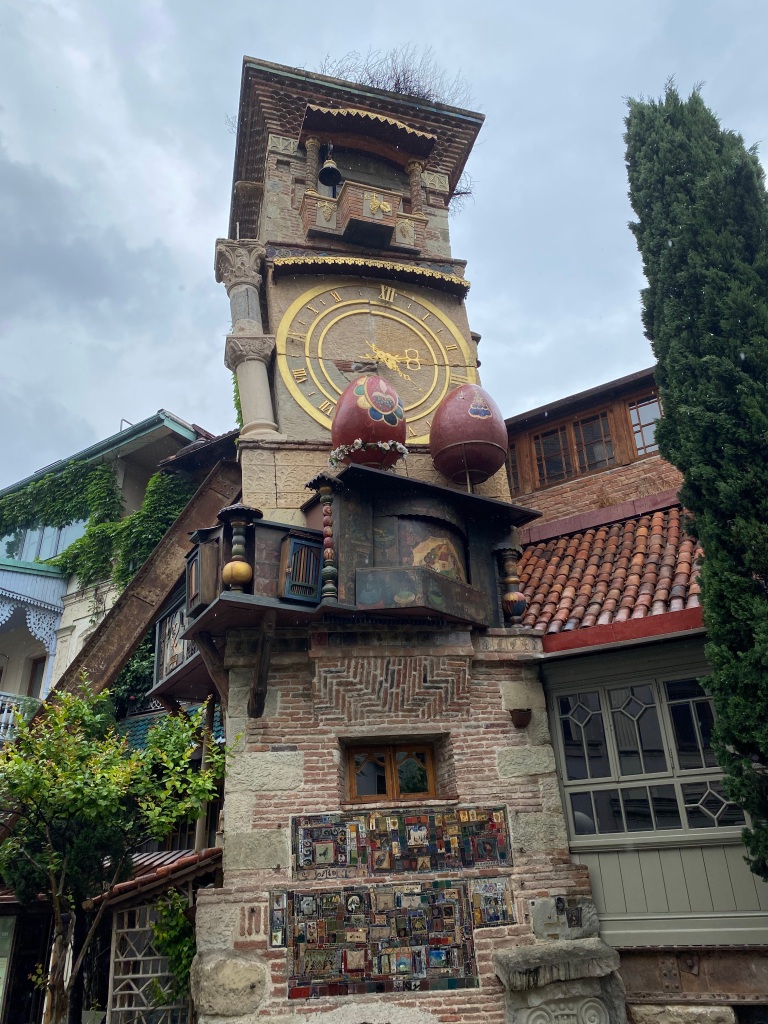
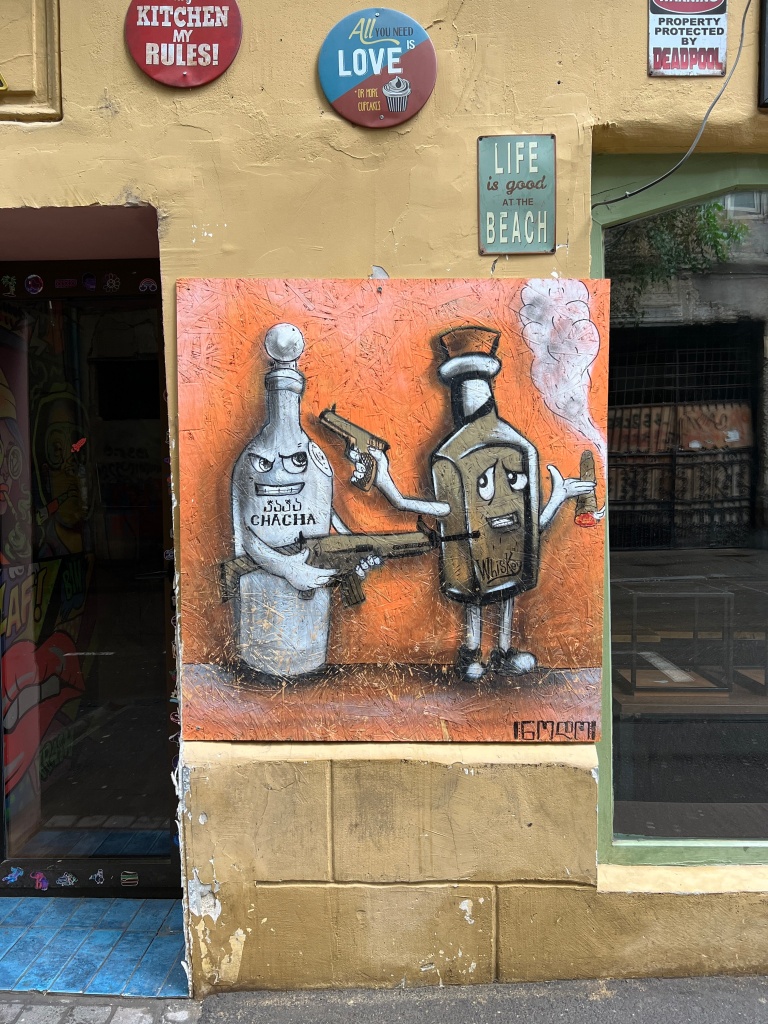
Day trips and excursions
Based on our experience, we would recommend the following:
- A day trip to the Kazbegi region (Private tours at competitive rates are available; just make sure to choose one with a good guide)
- An excursion to take in the Monument of Tbilisi and the artificial sea (We took public transport buses)
- A walking tour to take in the hidden gems, architecture and courtyards of the old houses in Tbilisi (We availed of a free tour and paid 50 Lari at the end of the tour)
TOP TIP: Don’t miss out on the historical Lado Gudiashvili Square. in Tbilisi. It is located in Old Tbilisi district, near Freedom Square. There are 11 buildings around the square, nine of which are of historical importance and these are often lit up in the evening creating a beautiful aesthetic atmosphere.
- Taking the Funicular to go to top of the mountain Mtatsminda and the park located at the top (Public buses are available to take you to the Funicular station; it’s a steep walk if you choose to walk, and from there on, you take the amazing ride which traces its history to 1905!)
From top left to bottom (The monument of Tbilisi, artificial sea, a scene from the Kazbegi region, the Gergeti Trinity Church, a rustic style barbecue joint at the Mtatsminda Park, a view to catch from the Mtatsminda Park.)
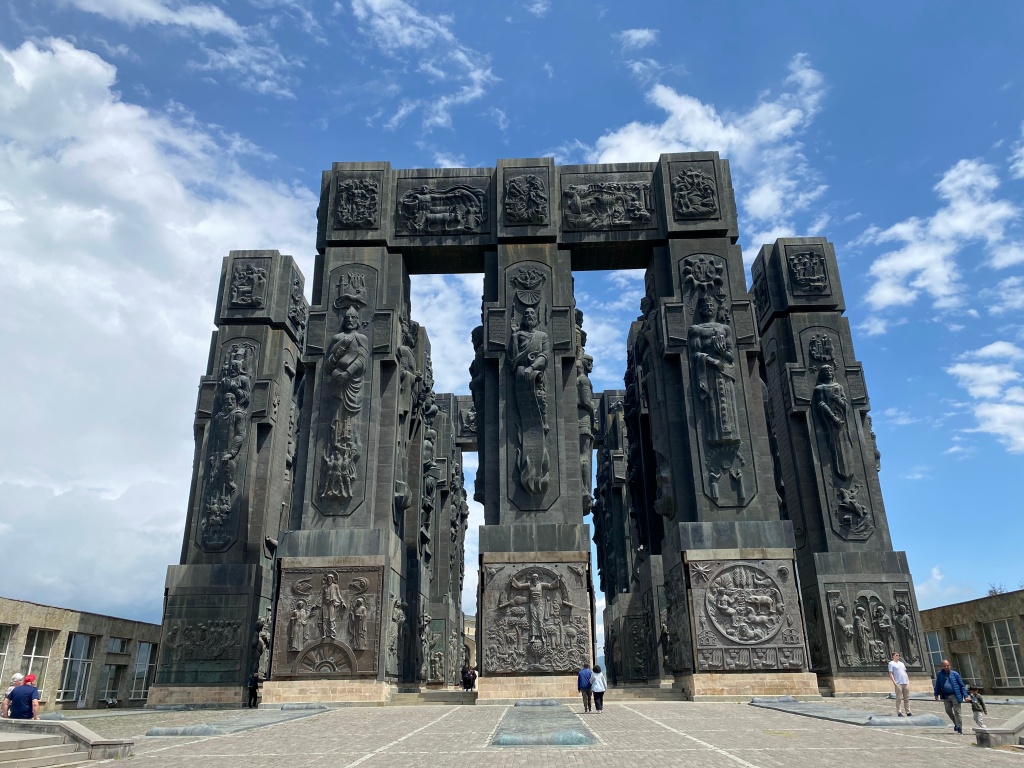
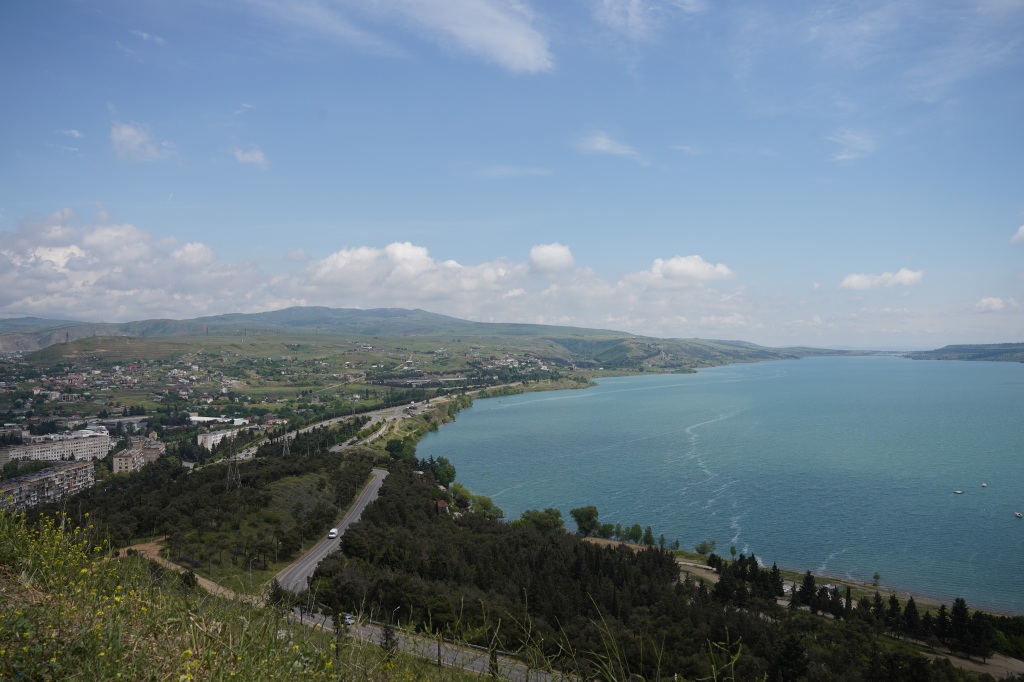
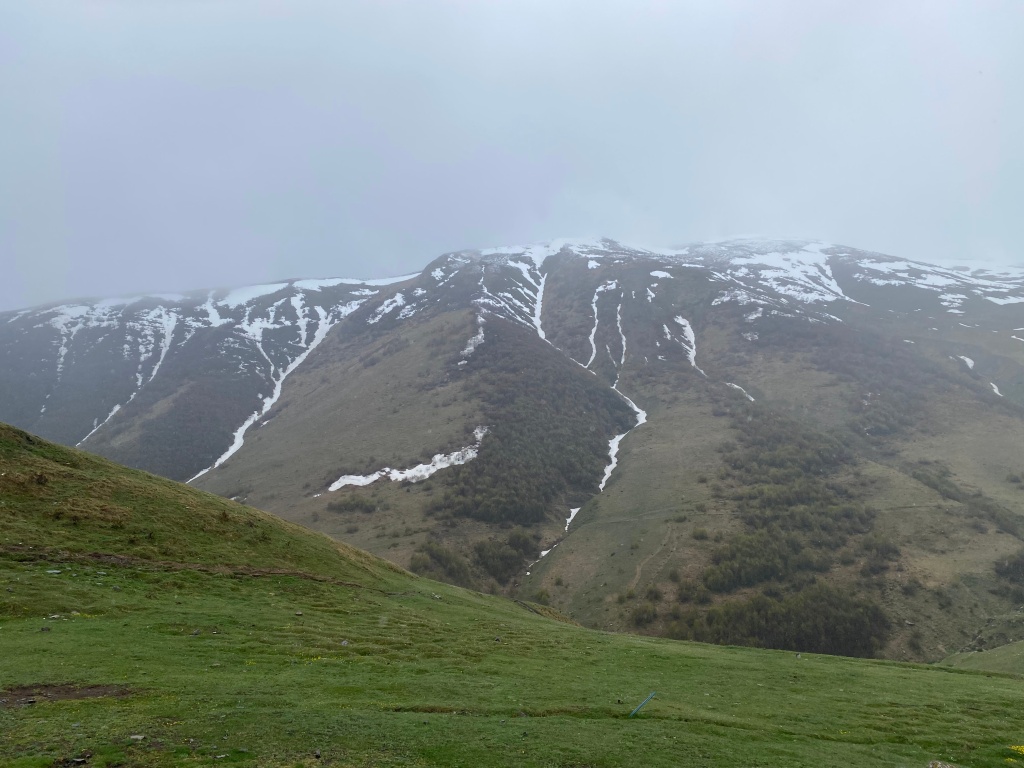
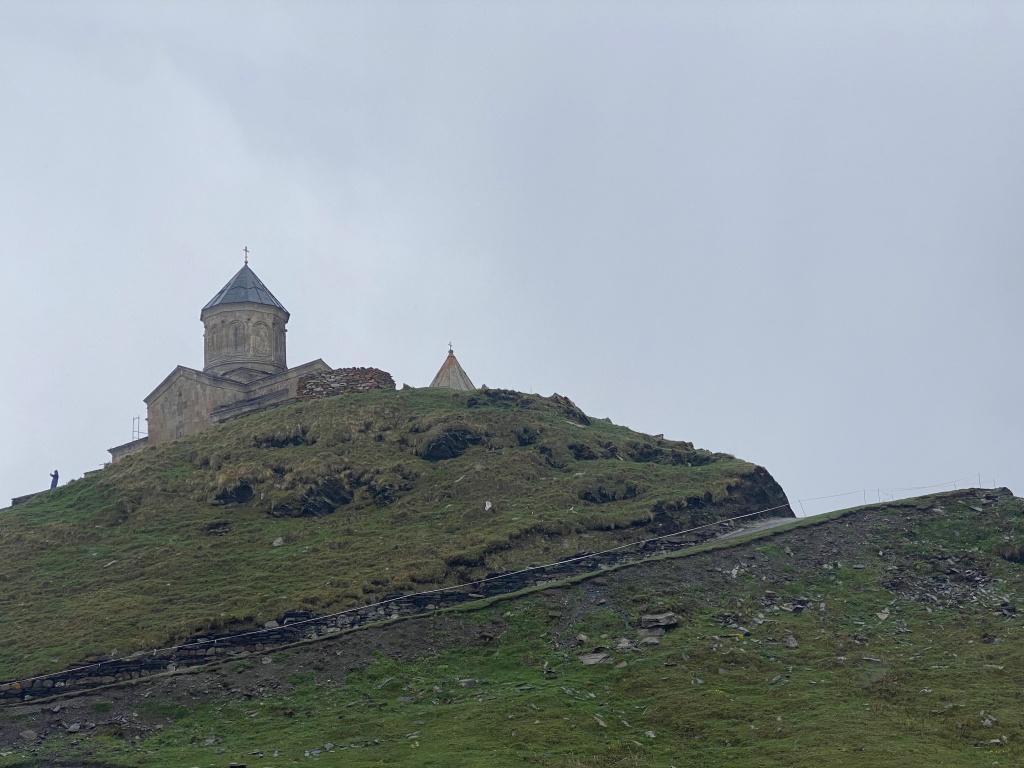
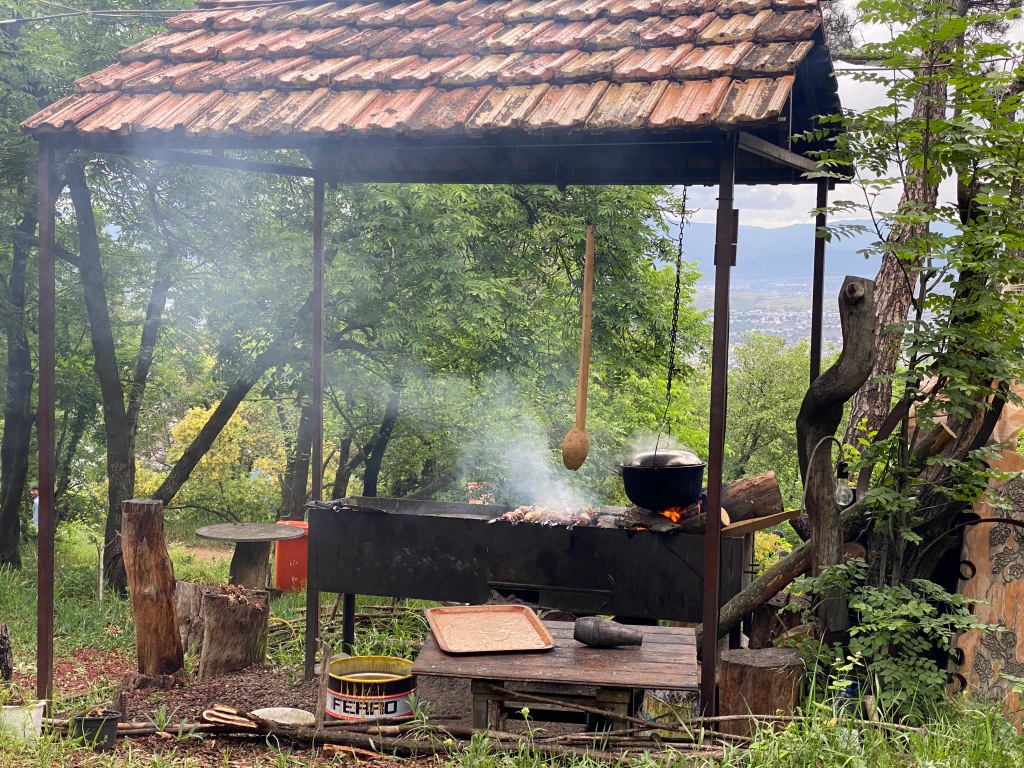
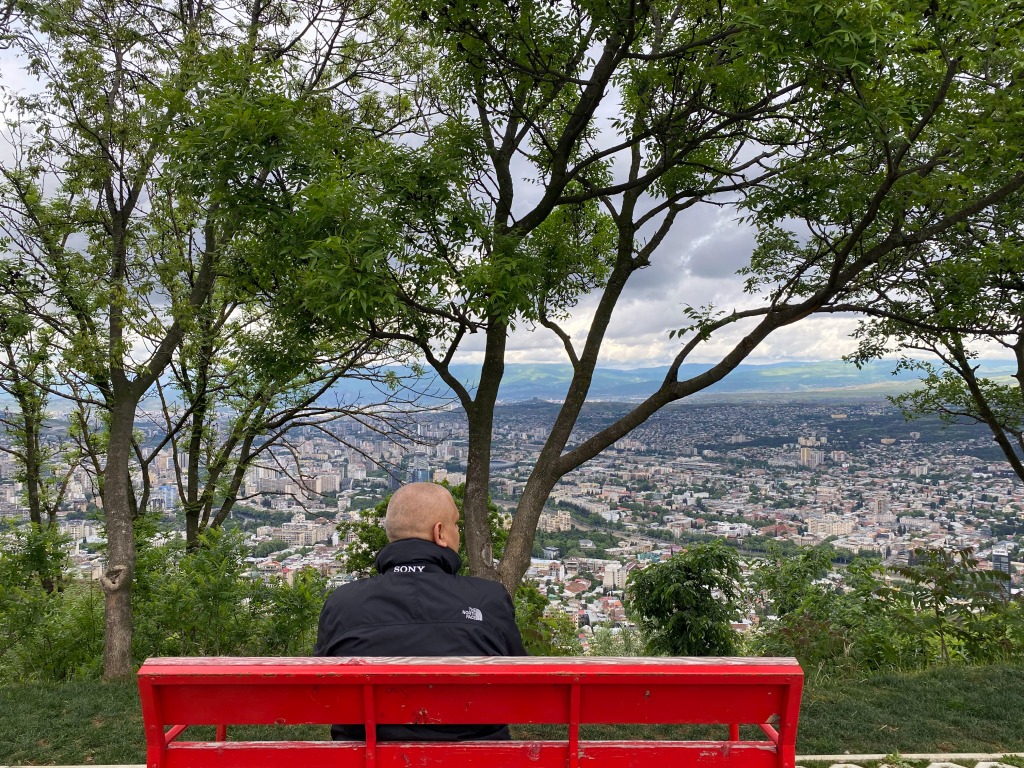
I will be back with more – there’s so much to write about Tbilisi.
The pictures below will offer an additional glimpse, I hope – from Tbilisi’s sulphur bathhouses, interiors of churches as well as the Russian era underground metro.
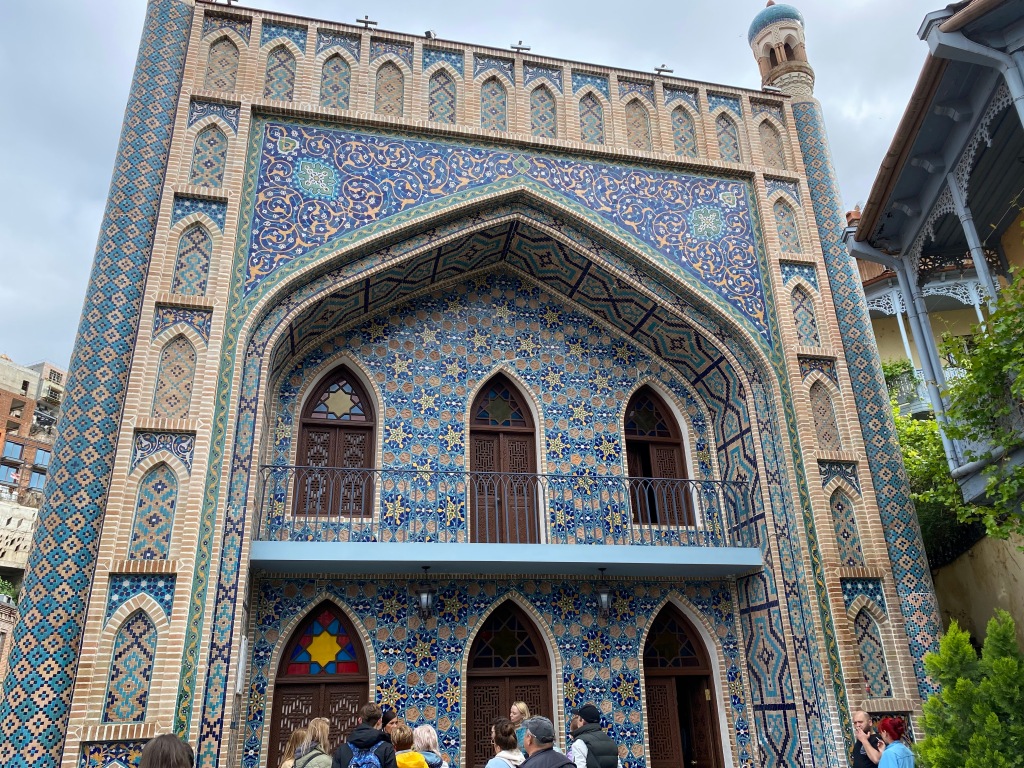
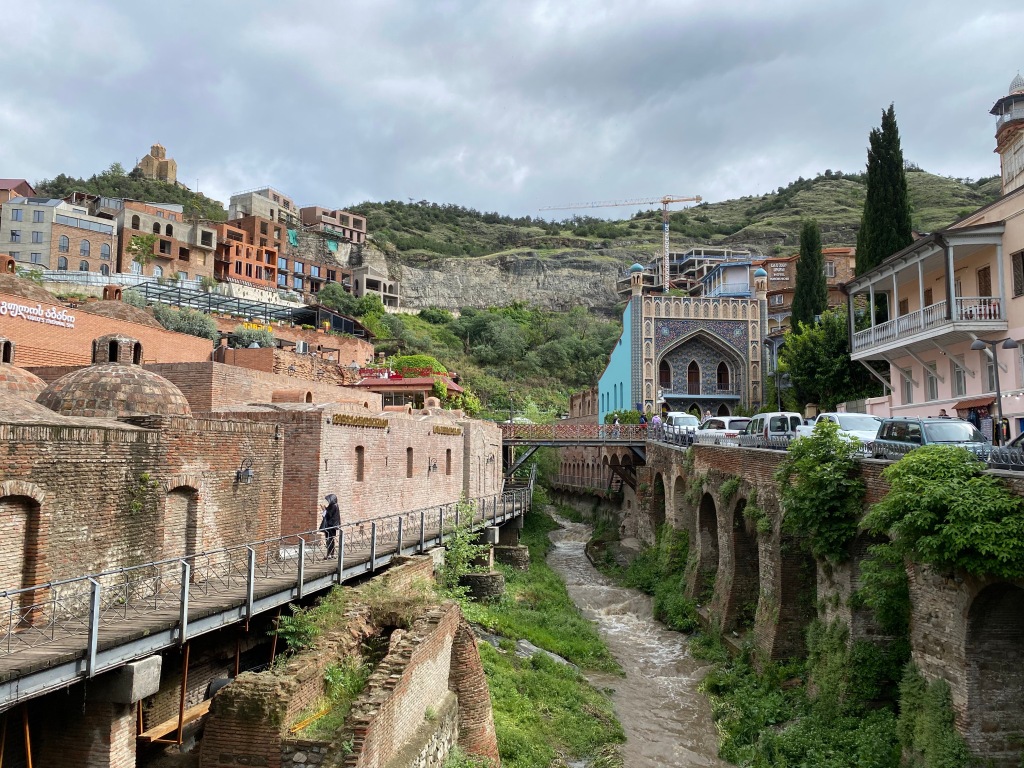
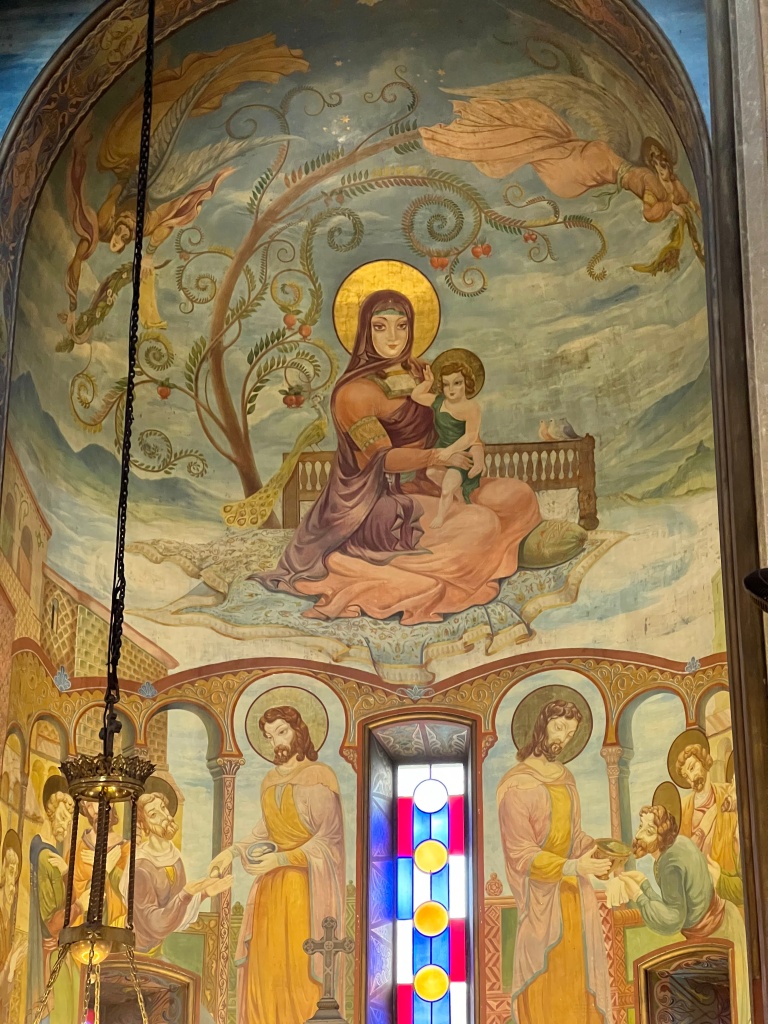
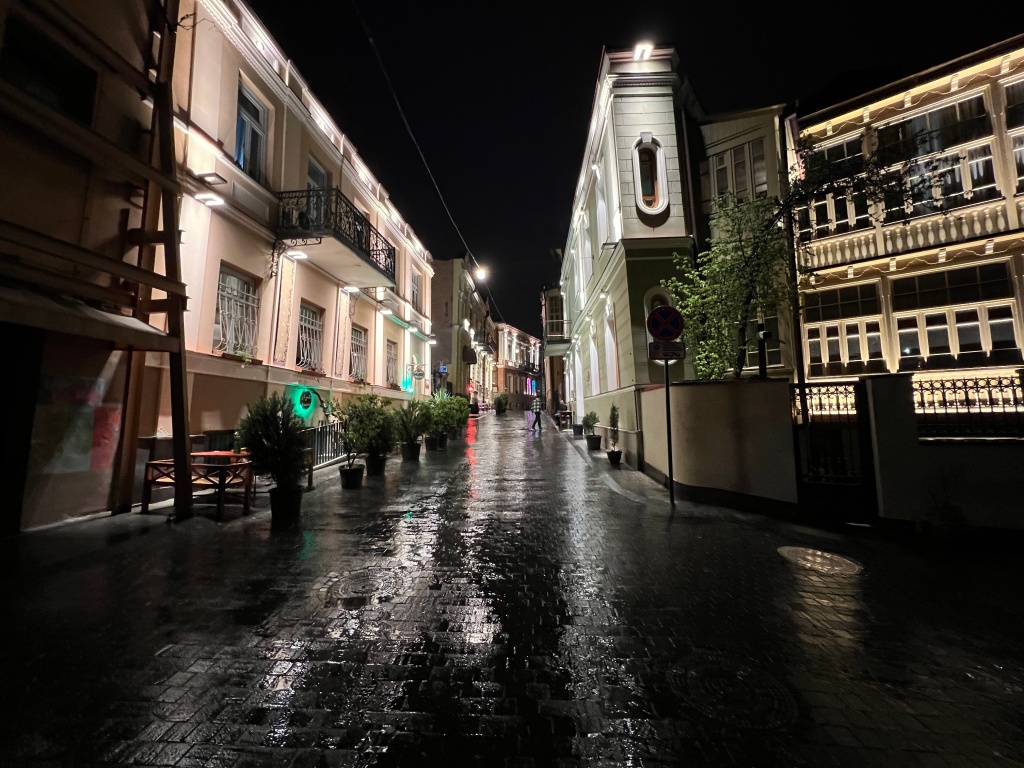
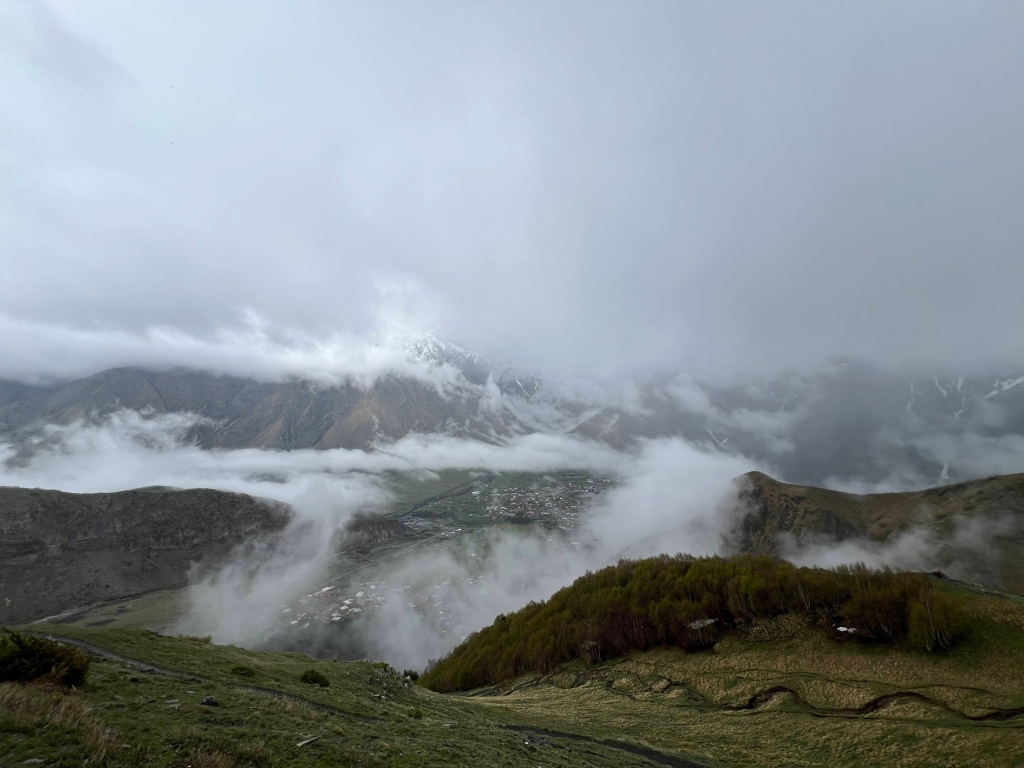
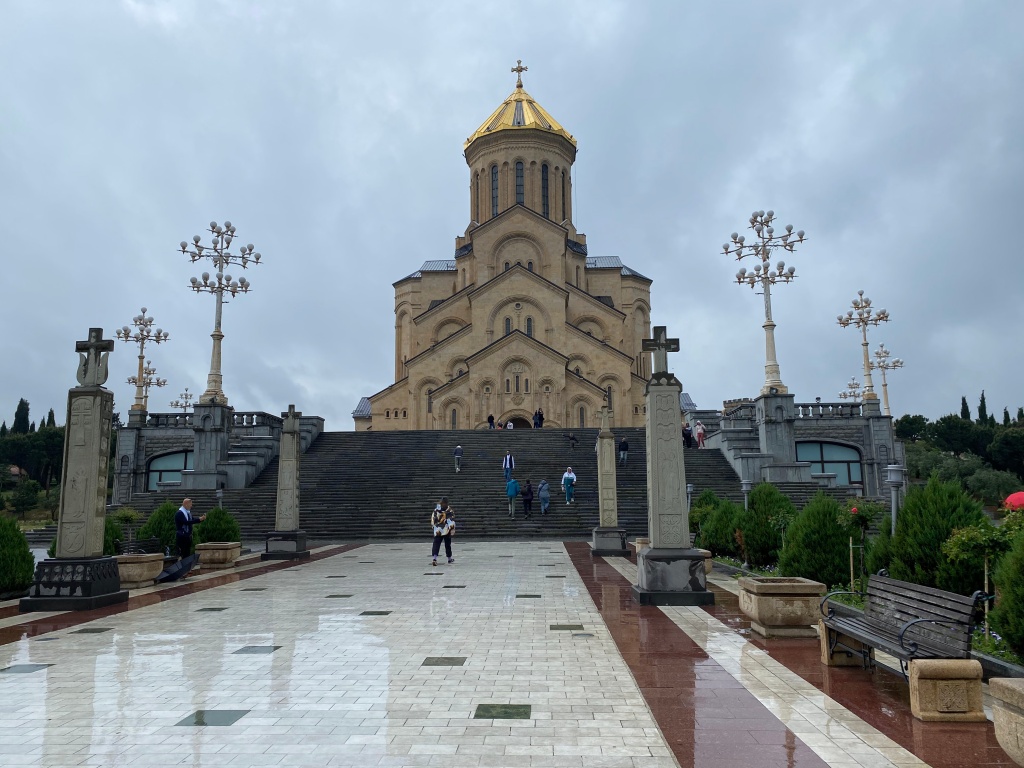
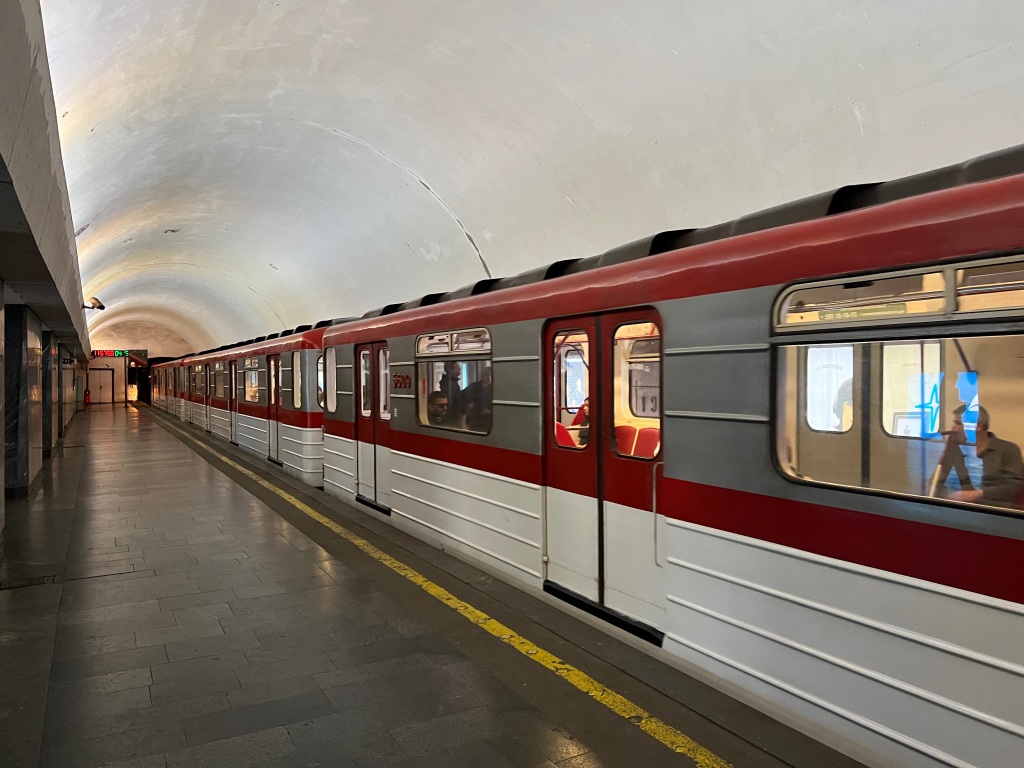
I’ve always been intrigued by the cute name, Tbilisi. Thanks to you, I now know it lives up to the promise! Lovely pics!
LikeLiked by 1 person
Thank you so much, Harini. You would have loved the courtyards of the old houses. These were communal spaces with washing and laundry lines, a tap, sometimes a small fountain, a shared garden…originally these houses were owned by the bourgeois. When Georgia was captured and made a part of the USSR, the Russians dismantled the bourgeois class and used these houses to accommodate a number of people. On another note, there was this wall in the main city centre, with bullet holes…it was the place where the Russian army had fired upon a peaceful protest by Tbilisi. That reminded me of the Jallianwala Bagh massacre in India
LikeLiked by 1 person
Poignant – the history of ordinary peaceful people as opposed to politics.
LikeLiked by 1 person